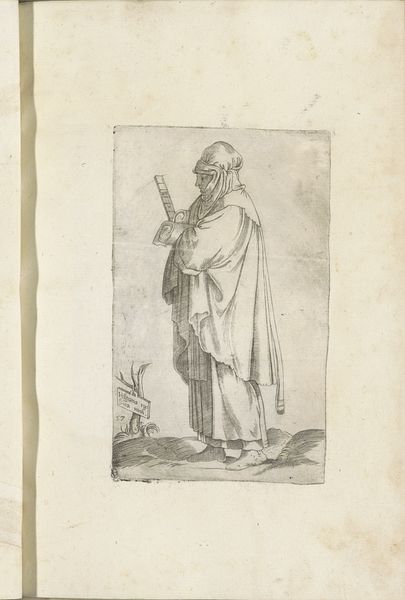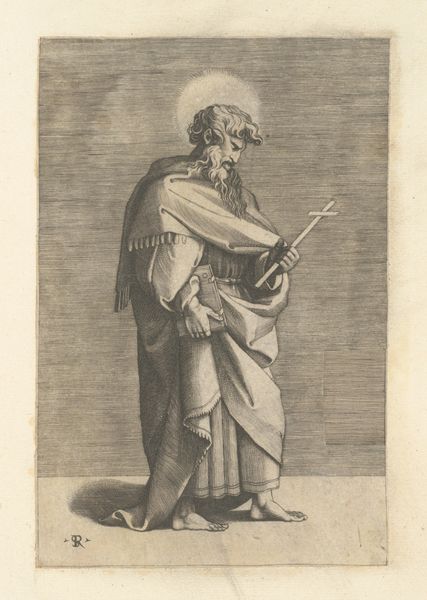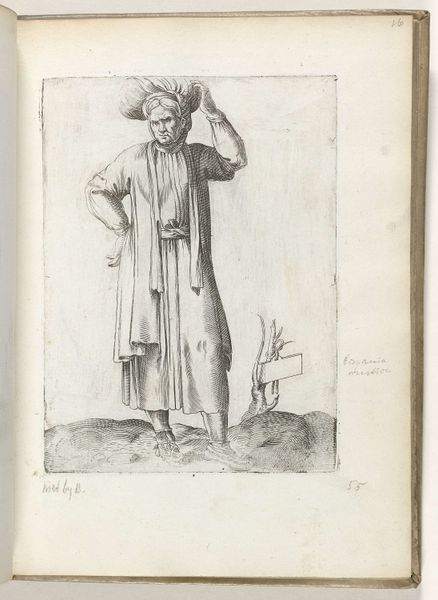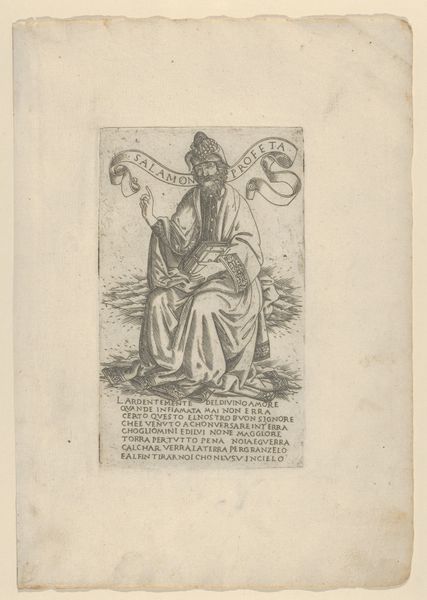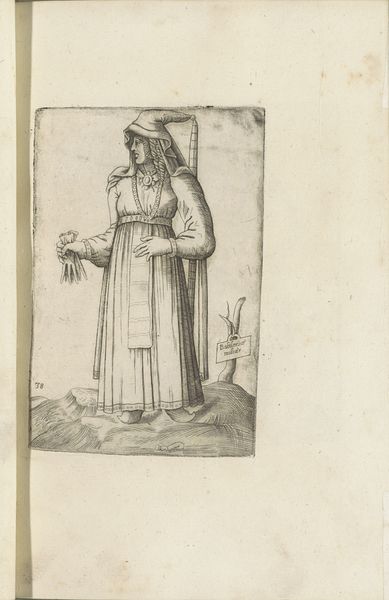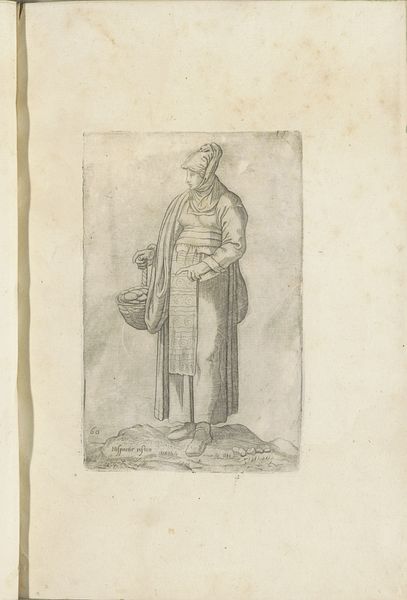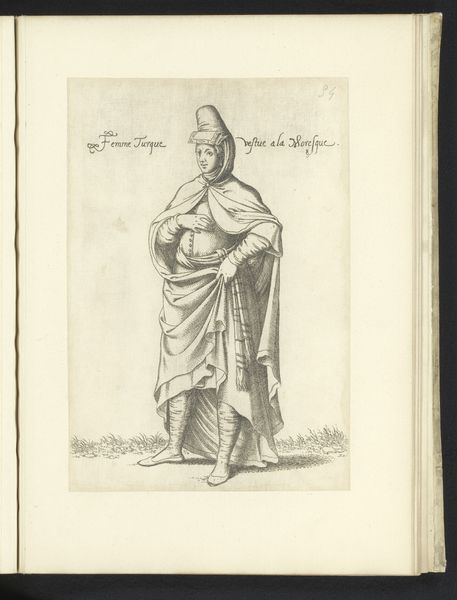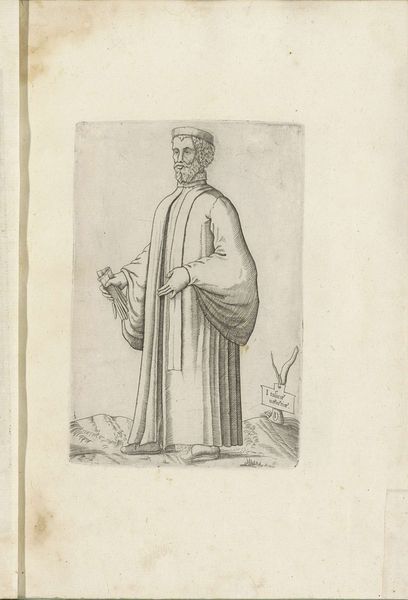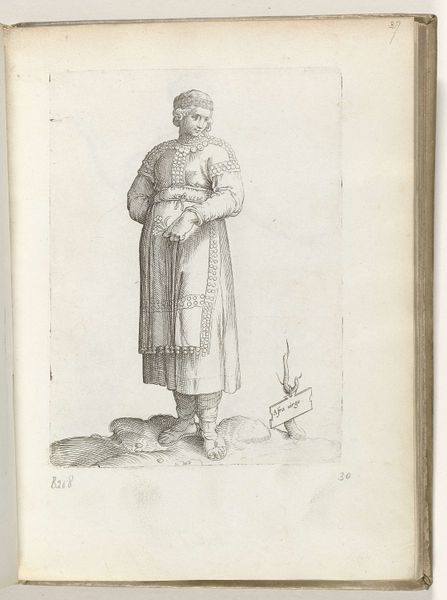
drawing, paper, pen
#
portrait
#
drawing
#
aged paper
#
toned paper
#
light pencil work
#
pencil sketch
#
sketch book
#
figuration
#
paper
#
11_renaissance
#
personal sketchbook
#
idea generation sketch
#
line
#
sketchbook drawing
#
pen
#
history-painting
#
storyboard and sketchbook work
#
italian-renaissance
#
sketchbook art
Dimensions: height 265 mm, width 195 mm, height 150 mm, width 105 mm
Copyright: Rijks Museum: Open Domain
Editor: Here we have "Spaanse Vrouw," or "Spanish Woman," a drawing made around 1569 by Ferando Bertelli. It's done with pen and pencil on paper, and you can really see the light pencil work. There's a delicacy to the lines that I find striking. What catches your eye in this drawing? Curator: Immediately, I'm drawn to how the artist renders this figure as a vessel of cultural memory. Note the deliberate staging – her gesture, almost an offering, is echoed in the placard beside her. It evokes not just an individual but an idea *of* "Spanish Woman," loaded with meaning for its contemporary audience. What feelings does her attire trigger for you? Editor: I’m not sure, I guess it evokes… modesty? A certain level of wealth, perhaps, but… subdued? Curator: Precisely. Observe the layers, the covering of the head – symbols that carry weighty historical significance about women, status, and nationhood in the 16th century. It prompts the question: Is this a portrayal or a carefully constructed representation intended to communicate certain ideas? Notice the lack of overt ornamentation which serves to communicate a sense of seriousness of purpose. How might this lack of flourish influence its viewers? Editor: That's interesting… by stripping away some of the adornments, the artist emphasizes the figure's stoicism. It makes her seem both vulnerable and resolute, almost. Curator: Yes, precisely, the symbolic sparseness amplifies a complex internal world. Art, here, acts as a cultural mirror. Editor: This makes me think about how symbols persist and transform. It is so interesting to think about what meaning gets carried on through them across the years. Curator: Exactly. I hadn't considered that parallel so directly before either!
Comments
No comments
Be the first to comment and join the conversation on the ultimate creative platform.
